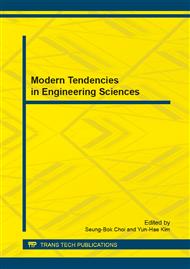[1]
M. Ayob, P. Cowling, and G. Kendall. Optimisation for Surface Mount Placement Machines, Proceedings of the IEEE ICIT02 (2002) pp.498-503.
DOI: 10.1109/icit.2002.1189947
Google Scholar
[2]
Y. Crama, J.V.D. Klundert, and F.C.R. Spieksma. Production planning problems in printed circuit board assembly, Discrete Applied Mathematics 123 (2002) 339-361.
DOI: 10.1016/s0166-218x(01)00345-6
Google Scholar
[3]
D. Ben-Arieh and M. Dror. Part assignment to electronic insertion machines, Two machine case. International Journal of Production Research 28 (1990) 1317-1327.
DOI: 10.1080/00207549008942795
Google Scholar
[4]
Y. Crama, A.W.J. Kolen, A.G. Oerlemans, and F.C.R. Spieksma. Throughput rate optimization in the automated assembly of printed circuit boards, Annals of Operations Research 26 (1990) 455-480.
DOI: 10.1007/bf03543080
Google Scholar
[5]
D. M. Kodek and M. Krisper. Optimal algorithm for minimizing production cycle time of a printed circuit board assembly line, International Journal of Production Research 42 (2004), 5031-5048.
DOI: 10.1080/00207540412331285814
Google Scholar
[6]
W.L. Lin. and V. Tardif. Component partitioning under demand and capacity uncertainty in printed circuit board assembly, International Journal of Flexible Manufacturing Systems 11 (1999) 159-176.
Google Scholar
[7]
M. T. Sze, P. Ji, and W. B. Lee. Modeling the component assignment problem in PCB assembly, Assembly Automation, Vol (2001) 55-60.
DOI: 10.1108/01445150110381745
Google Scholar
[8]
Y. F. Wan and P. Ji. A tabu search heuristic for the component assignment problem in PCB assembly, Assembly Automation 21 (2001) 236-240.
DOI: 10.1108/eum0000000005619
Google Scholar
[9]
P. Csaszar, T.M. Tirpak, and P.C. Nelson. Object-oriented simulator design for an automated high-speed modular placement machine family, Simulation Vol. 73 (1999) 341-351.
DOI: 10.1177/003754979907300603
Google Scholar
[10]
K. P. Ellis, J. E. Kobza, and F. J. Vittes. Development of a placement time estimator function for a turret style surface mount placement machine, Robotics and Computer Integrated Manufacturing, 18 (2002) 241-254.
DOI: 10.1016/s0736-5845(02)00015-7
Google Scholar
[11]
T.M. Tirpak. Simulation software for surface mount assembly, Proceedings of the 1993 Simulation Conference, Los Angeles (1993) pp.796-803.
DOI: 10.1109/wsc.1993.718322
Google Scholar
[12]
R. R. Hocking. A Biometrics Invited Paper: The Analysis and Selection of Variables in Linear Regression, Biometrics 32 (1976) 1-50.
DOI: 10.2307/2529336
Google Scholar


